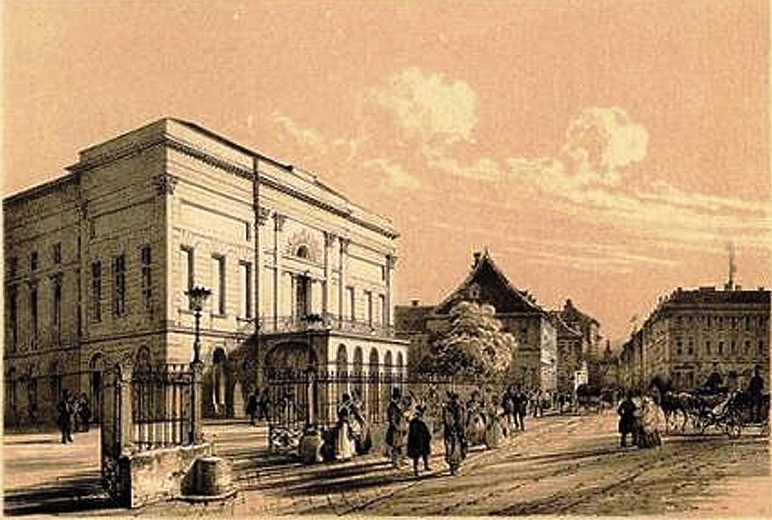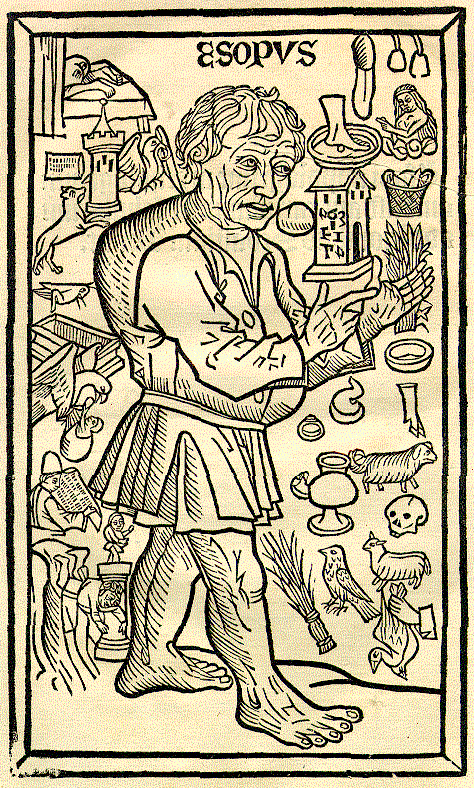|
Jenő Rákosi
Jenő Rákosi (born Jenő Kremsner; 12 November 1842, Acsád, Kingdom of Hungary (1526–1867), Kingdom of Hungary – 8 February 1929, Budapest, Kingdom of Hungary (1920–46), Hungary) was a Hungarian writer, journalist, theater director, editor, and a member of Hungarian Academy of Sciences and Kisfaludy Society and a member of the Petőfi Association. His family includes doctor Béla Rákosi, writer Viktor Rákosi, and actress Szidi Rákosi. Life He was the son of János Kremsner and Anna Vogel, who were Danube Swabians. His father previously lived in the villages of Ukk and Dabronc, where he worked as a goldsmith and was a bailiff with a small estate. His family changed their name to Rákosi in 1867. By the 1850s, the family had settled in the village of Türje, where his childhood home had a plaque installed by the Danubian Cultural Association in 1942. Rákosi went to school first in Sárvár, then graduated in started and finished high school in a class of six in Kős ... [...More Info...] [...Related Items...] OR: [Wikipedia] [Google] [Baidu] |
Somogy County (former)
Somogy was an administrative county (Comitatus (Kingdom of Hungary), comitatus) of the Kingdom of Hungary. Its territory, which was slightly larger than that of present Somogy county, is now in south-western Hungary. The capital of the county was Kaposvár. Geography Somogy County shared borders with the Hungarian counties of Zala (former county), Zala, Veszprém County (former), Veszprém, Tolna County (former), Tolna, Baranya County (former), Baranya, Virovitica County, Verőce and Belovár-Körös (the latter two part of Croatia-Slavonia). It extended along the southern shore of Lake Balaton and encompassed the region south of the lake. The river Drava (Hungarian: Dráva) formed most of its southern border. Its area was 6530 km2 around 1910. History In the 10th century, the Hungarian Nyék tribe occupied the region around Lake Balaton, mainly the areas which are known today as Zala County, Zala and Somogy counties. Somogy County arose as one of the first comitatuses of th ... [...More Info...] [...Related Items...] OR: [Wikipedia] [Google] [Baidu] |
Zsigmond Kemény
Baron Zsigmond Kemény (June 12, 1814December 22, 1875) was a writer from the Austrian Empire. Life and work Kemény was born in Alvincz, Principality of Transylvania, Austrian Empire (today Vințu de Jos, Romania) to a distinguished noble family, but family feuds left him with little personal wealth. His early schooling in Nagyenyed (today Aiud, Romania) gave him knowledge of English law, French law and German law, politics and culture. In 1837 he studied jurisprudence at Marosvásárhely (today Târgu-Mureş, Romania), but soon devoted himself entirely to journalism and literature. His first unfinished work, ''On the Causes of the Disaster of Mohács'' (1840), attracted much attention. In the same year he studied natural history and anatomy at Vienna University. In 1841, along with Lajos Kovács, he edited the Transylvanian newspaper ''Erdélyi Híradó''. He also took an active part in provincial politics and warmly supported the principles of Count István Széchenyi C ... [...More Info...] [...Related Items...] OR: [Wikipedia] [Google] [Baidu] |
Deák Party
The Deák Party () was a political party in Hungary in the 1860s and 1870s led by Ferenc Deák. History The Deák Party was founded in 1865 as the successor to the Address Party. It won the 1865 elections in Hungary, and also won a large majority in the 1869 elections following the Austro-Hungarian Compromise of 1867.Vincent E McHale (1983) ''Political parties of Europe'', Greenwood Press, p499 It won another majority in the 1872 elections, but Deák retired from public life in 1873, setting the party into decline. In February 1875 it merged with the Left Centre to form the Liberal Party The Liberal Party is any of many political parties around the world. The meaning of ''liberal'' varies around the world, ranging from liberal conservatism on the right to social liberalism on the left. For example, while the political systems .... References {{DEFAULTSORT:Deak Party Defunct political parties in Hungary Political parties established in 1865 Political parties d ... [...More Info...] [...Related Items...] OR: [Wikipedia] [Google] [Baidu] |
Pesti Napló
''Pesti Napló'' () was a Hungarian newspaper published from March 1850 to October 1939. The paper was based in Budapest, Hungary Hungary is a landlocked country in Central Europe. Spanning much of the Pannonian Basin, Carpathian Basin, it is bordered by Slovakia to the north, Ukraine to the northeast, Romania to the east and southeast, Serbia to the south, Croatia and .... The Hungarian author Zsigmond Kemény was among the regular contributors to another paper, ''Pesti Hírlap''. He became the editor of ''Pesti Napló'' in 1855. References 1850 establishments in Hungary 1939 disestablishments in Hungary Defunct newspapers published in Hungary Defunct Hungarian-language newspapers Newspapers published in Budapest Newspapers established in 1850 Publications disestablished in 1939 {{Hungary-newspaper-stub ... [...More Info...] [...Related Items...] OR: [Wikipedia] [Google] [Baidu] |
National Theatre (Budapest)
The National Theatre, located in Budapest originally opened in 1837. Since then, it has occupied several locations, including the original building at Kerepesi Street, the ''People's Theatre'' at Blaha Lujza tér (Budapest Metro), Blaha Lujza Square, as well as Hevesi Sándor Square, its longest temporary location. It currently occupies the National Theatre building, which opened March 15, 2002. History The concept of a national theatre in Budapest was born at the turn of the 18th-19th century, promoted by influential thinkers including Ferenc Kazinczy and Baron István Széchenyi. Széchenyi was a major figure in Hungary's reform. He dreamed of a great building on the bank of the Danube that would operate in the form of a joint-stock company. He proposed his plans in his 1832 pamphlet, ''A Magyar Játékszínről''. The National Assembly (Hungary), Hungarian Parliament made the decision to move forward with a national theatre in its 41st article of 1836. Led by Antal Grassalk ... [...More Info...] [...Related Items...] OR: [Wikipedia] [Google] [Baidu] |
Aesop
Aesop ( ; , ; c. 620–564 BCE; formerly rendered as Æsop) was a Greeks, Greek wikt:fabulist, fabulist and Oral storytelling, storyteller credited with a number of fables now collectively known as ''Aesop's Fables''. Although his existence remains unclear and no writings by him survive, numerous tales credited to him were gathered across the centuries and in many languages in a storytelling tradition that continues to this day. Many of the tales associated with him are characterized by anthropomorphic animal characters. Scattered details of Aesop's life can be found in ancient sources, including Aristotle, Herodotus, and Plutarch. An ancient literary work called ''The Aesop Romance'' tells an episodic, probably highly fictional version of his life, including the traditional description of him as a strikingly ugly Slavery in Ancient Greece, slave () who by his cleverness acquires freedom and becomes an adviser to kings and city-states. Older spellings of his name have included ... [...More Info...] [...Related Items...] OR: [Wikipedia] [Google] [Baidu] |
Ladislaus The Posthumous
Ladislaus V, more commonly known as Ladislaus the Posthumous (; ; ; ; 22 February 144023 November 1457), was Duke of Austria and King of Hungary, King of Croatia, Croatia and King of Bohemia, Bohemia. He was the posthumous birth, posthumous son of Albert II of Germany, Albert of Habsburg with Elizabeth of Luxembourg. Albert had bequeathed all his realms to his future son on his deathbed, but only the Estates of the realm, estates of Austria accepted his last will. Fearing an Ottoman Turks, Ottoman invasion, the majority of the Hungarian lords and prelates offered the crown to Władysław III of Poland, Vladislaus III of Poland. The Hussites, Hussite noblemen and towns of Bohemia did not acknowledge the hereditary right of Albert's descendants to the throne, but also did not elect a new king. After Ladislaus's birth, his mother seized the Holy Crown of Hungary and had Ladislaus crowned king in Székesfehérvár on 15 May 1440. However, the Diet of Hungary declared Ladislaus's coro ... [...More Info...] [...Related Items...] OR: [Wikipedia] [Google] [Baidu] |
Shakespearean
William Shakespeare ( 23 April 1564 – 23 April 1616) was an English playwright, poet and actor. He is widely regarded as the greatest writer in the English language and the world's pre-eminent dramatist. He is often called England's national poet and the "Bard of Avon" or simply "the Bard". His extant works, including collaborations, consist of some 39 plays, 154 sonnets, three long narrative poems and a few other verses, some of uncertain authorship. His plays have been translated into every major living language and are performed more often than those of any other playwright. Shakespeare remains arguably the most influential writer in the English language, and his works continue to be studied and reinterpreted. Shakespeare was born and raised in Stratford-upon-Avon, Warwickshire. At the age of 18, he married Anne Hathaway, with whom he had three children: Susanna, and twins Hamnet and Judith. Sometime between 1585 and 1592 he began a successful career in London a ... [...More Info...] [...Related Items...] OR: [Wikipedia] [Google] [Baidu] |
Benedictines
The Benedictines, officially the Order of Saint Benedict (, abbreviated as O.S.B. or OSB), are a mainly Christian mysticism, contemplative Christian monasticism, monastic Religious order (Catholic), order of the Catholic Church for men and for women who follow the Rule of Saint Benedict. Initiated in 529, they are the oldest of all the religious orders in the Latin Church. The male religious are also sometimes called the Black Monks, especially in English speaking countries, after the colour of their religious habit, habits, although some, like the Olivetans, wear white. They were founded by Benedict of Nursia, a 6th-century Italian monk who laid the foundations of Benedictine monasticism through the formulation of his Rule. Benedict's sister, Scholastica, possibly his twin, also became a religious from an early age, but chose to live as a hermit. They retained a close relationship until her death. Despite being called an order, the Benedictines do not operate under a single ... [...More Info...] [...Related Items...] OR: [Wikipedia] [Google] [Baidu] |
Somogy County
Somogy (, ; ; , ) is an administrative county (Counties of Hungary, comitatus or ''vármegye'') in present Hungary, and also in the former Kingdom of Hungary. Somogy County lies in south-western Hungary, on the border with Croatia's Koprivnica-Križevci County, Koprivnica-Križevci and Virovitica-Podravina County, Virovitica-Podravina counties. It stretches between the river Dráva and the southern shore of Lake Balaton. It shares borders with the Hungarian counties of Zala County, Zala, Veszprém (county), Veszprém, Fejér, Tolna (county), Tolna, and Baranya (county), Baranya. Somogy is the most sparsely populated county in Hungary. The county capital is Kaposvár. Its area is 6,036 km2. History Somogy was also the name of a historic administrative county (Comitatus (Kingdom of Hungary), comitatus) of the Kingdom of Hungary. Its territory, which was slightly larger than that of present Somogy County, is now in south-western Hungary. The capital of that county was also ... [...More Info...] [...Related Items...] OR: [Wikipedia] [Google] [Baidu] |






